/PAlogo_v2.gif) |
|
Post Reply 
|
Page 123 10> |
| Author | |||
erik neuteboom 
Prog Reviewer 
Joined: July 27 2005 Location: Netherlands Status: Offline Points: 7659 |
 Topic: The Prog Andaluz Aficionado Thread Topic: The Prog Andaluz Aficionado ThreadPosted: September 15 2007 at 05:52 |
||
|
Hello fellow Prog Andaluz aficionados.
Today I have decided to boost the very unique and most widespread blend of folk and progressive rock: the PROG ANDALUZ, a compelling meeting of progressive rock and flamenco and a captivating musical encounter of the UK wealthy upper-stiff lip era and the poor Andalusian world in the Southern part of Spain.
When I started to work for Prog Archives in early 2004 I wrote the biography for Triana, the band that speerheaded the Prog Andaluz movement, here it is as a start of this thread:
TRIANA biography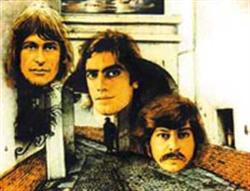
Progressive music sub-genre: Symphonic Prog TRIANA is the most legendary progressive rockband in Spain. Their stunning debut-album was a seminal blend of flamenco and progrock and paved the way to flamenco-inspired progrock in Spain, culminating in bands like AZAHAR, CAI, ALAMEDA, QUALDAQUIVIR, MEZQUITA and MEDINA AZAHARA. The story of TRIANA started in Seville, the beating heart of the flamenco. Jesus de la Rosa (keyboards/vocals) was a known musician in the local music scene and he even had international success with "Los Bravos" and their single "Black Is Black". But he wanted to form his own band to make progressive rock, so he recruited Eduardo Rodriquez Rodway (vocals/guitar) and Juan Jose Palacios ‘Tele’ (drums/percussion). The trio called themselves TRIANA, named after the most traditional part of the town and they moved to Madrid. With some help they were allowed to record their music in a studio with highly advanced equipment.
In ’74 "Triana" first released a single titled "Bulerias 5x8" (it became a failure) and then the debut album "El Patio" (’75). Unfortunately their flamenco-progrock did little, eventually the album sold 1000 copies. But after a big presentation in Madrid in ’76, things started to improve and in ’77 the second album "Hijos Del Agobio" came out, followed by the single "Rumor". The emotional lyrics (about hope after the end of general Franco’s dictatorship) were embraced by the Spanish youth when the radio started to play "Rumor". TRIANA’s music boosted the youth’s identity and it gave them a way to show their emotions. And how ironically, TRIANA’s music became less progressive while the band became more and more famous. Their third LP "Sombra Y Luz" (’79) sold 300.000 copies and from the fourth album "Encuentro" (’80) TRIANA turned out to be Spain’s most popular rockband. Further releases were "Triana" (’81) and "Llego El Dia" (’83) but then the story ended very sad because in ’83 Jesus de la Rosa died in a tragic car incident and the other musicians decided to call it a day. Record company Fonomusic released some compilations, especially the beautifully packed 2-CD "Una Historia" (’95) is recommended. The opener on the first album "El Patio Is Abre La Puerta" (almost 10 minutes), it starts with choir-Mellotron, piano and flamenco guitar (tremolo-technique). Then the typical sensitive and skillful flamenco guitar blends with piano and soft synthesizer chords. A fluent and tight rhythm-section carries the music to a powerful acceleration with the typical flamenco vocals, expressive and a bit wailing. The rest of this song contains lots of shifting moods that range from mellow with flamenco guitar and choir-Mellotron to propulsive with powerful drums and howling electric guitar, very moving. Most of the other six compositions are in the vein of "Abre La Puerta": beautiful shifting climates with typical flamenco elements like palmas (handclapping), rasgueado (quick downward strikes across all strings) and picados (quick runs on the guitar with two fingers), along with tasteful keyboards (organ, synthesizers, Mellotron and piano) and fine electric guitarplay. The final two tracks are splendid compositions: beautiful interplay between the flamenco – and electric guitar and a bombastic finale with rasgueado, organ and electric guitar in "En El Lago" and powerful drums and a howling and biting electric guitar in "Recuerdos De Una Noche". The second album "Hijos Del Agobio" is in the vein of "El Patio" but fails to generate the same excitement and the third "Sombra Y Luz" only sparks at some moments like the compelling titletrack. Later albums are tasteful but too polished poprock. I hope you will join and support this thread, give you opinion and will help to give recommendations or advises, don't hesitate to post your thoughts and ideas, thanks in advance
Edited by erik neuteboom - September 15 2007 at 05:53 |
|||
 |
|||
rambibambi 
Forum Newbie 
Joined: August 26 2007 Status: Offline Points: 26 |
 Posted: September 15 2007 at 21:01 Posted: September 15 2007 at 21:01 |
||
|
this sounds very interesting.I am very glad you posted this. I would have probably dug them up sooner or later but this makes it so much faster.. I like Spanish sounding sounds. I have had modest eperience but only with some folkish and folk rock bands from Galicia and Asturias..and some flamenco guitars. I am likely to check the highlighted albums. Thanks!
|
|||
 |
|||
avestin 
Special Collaborator 
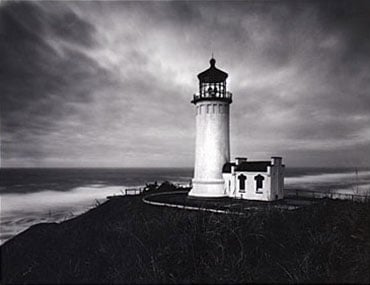
Honorary Collaborator Joined: September 18 2005 Status: Offline Points: 12625 |
 Posted: September 15 2007 at 23:19 Posted: September 15 2007 at 23:19 |
||
|
A great "scene" with great bands and albums. Erik had a wonderful started about this two years ago, but it's good to start a new one. I'll let him mention the wonderful bands like MEZQUITA, TRIANA and others.
Related to this, be on the lookout for the interview with the fantastic Spanish band Senogul which Erik and I did together and will post soon here on PA.
|
|||
 |
|||
memowakeman 
Special Collaborator 
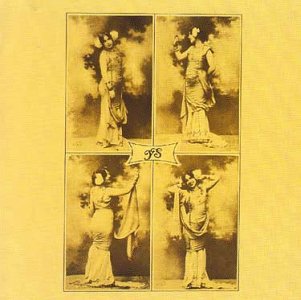
Honorary Collaborator Joined: May 19 2005 Location: Mexico City Status: Offline Points: 13032 |
 Posted: September 16 2007 at 01:23 Posted: September 16 2007 at 01:23 |
||
I am looking forward to read that interview!
Lately i have been listening a lot to Triana, really a worth listening
|
|||
|
Follow me on twitter @memowakeman |
|||
 |
|||
erik neuteboom 
Prog Reviewer 
Joined: July 27 2005 Location: Netherlands Status: Offline Points: 7659 |
 Posted: September 16 2007 at 04:35 Posted: September 16 2007 at 04:35 |
||
|
Thanks for posting fellow Prog Andaluz aficionados, I hope this thread
will deliver lots of interesting information, here is the special I wrote for this site:
THE PROG ANDALUZ TRIANA, the band that spearheaded the Prog Andaluz
 The bands A/Z:
Alameda - Todas Las Grabaciones En CBS 1979-1983
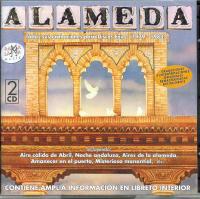 - Here is a 2-CD by Spanish progrock band Alameda featuring all the tracks from their four studio-albums, released between 1979 and 1983. If you are up to Spanish progressive rock, don't miss this excellent compilation, what an exciting encounter between progressive rock and flamenco, the ethnic music from Andalusia (the southern part of Spain). The 32 elaborate compositions sound very pleasant, melodic, harmonic and varied, from romantic and dreamy to bombastic symphonic rock or swinging jazzrock. The Spanish vocals are outstanding: powerful, emotional and that typical flamenco undertone (without the usual wailing experssion), this man gives many tracks an extra dimension! Alameda plays very professional: a splendid, very fluent rhythm- section, tasteful keyboards (from soaring strings to swinging piano and sensational synthesizer flights) and often exciting guitarwork, both electric as flamenco (with contributions from legends Tomatito and Paco De Lucia).If you want to discover the Spanish prog or you like Triana, Cai or Azahar, this comprehensive two set is yours! HIGHLY RECOMMENDED!! AZAHAR - Elixir
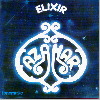 - This Spanish four-piece band made two fine albums, this is their first one. It’s released in a beautiful digipack FOC that contains the lyrics, a band picture, a short story and the tracking-list. If you compare AZAHAR’s music to TRIANA, MEDINA AZAHARA or MEZQUITA their sound on the nine compositions (between 3 and 6 minutes) is more laidback and more atmospheric, featuring tasteful keyboards (lush Solina string-ensemble waves, warm piano chords, sumptuous synthesizer runs), sensitive, often howling electric guitar, some fine flamenco guitar and strong, typical Spanish vocals (emotional and expressive). The running time is only 37 minutes but here it’s quality above quantity. A nice album but their next (and final) eponymous album is their best.
AZAHAR - Azahar  - In the early Nineties I bought a few Sirius magazines (former Spanish progrock fanzine) in order to improve my poor school Spanish. I noticed an add in which the known Spanish proghead Angel Romero was offering his entire progrock LP collection. I got in touch with him (we shared a negative view on the awful tradition of bullfights!) and he explained that he was suffering from an increasing dust-allergy, how sad. I asked him for advise to buy Spanish progrock records from him. Nowadays AZAHAR’s second eponymous album is still one of my favorites, the debut-album was entitled “Elixer”. The difference between these two CD’s (released by Fonomusic) is that the second sound far more mature. The eight compositions (running time between 2 and 10 minutes) are more varied and elaborated. The guitarplay is sensitive featuring short but powerful soli and some exciting flamenco guitarwork. The Spanish vocals has a typical Spanish undertone, very warm and expressive. The keyboards sound lush and have a pleasant variety: strings, organ, synthesizers, clavinet and acoustic – and electric piano. The rhythm-section plays dynamic, Spanish people have a natural feeling for rhythm! This CD is a very fine example of the unique Spanish progrock: harmonic, melodic and tasteful compositions above self- indulgence.
CAI - Noche Abierta 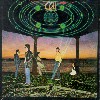 - CAI was a harmonic Spanish quintet with Diego Fopiani Macias (drums/vocals), Jose A. Fernandez Mariscall (guitar), Francisco Delgado Gonzalez (guitar), Sebastian Dominguez Lozano (keyboards and piano) and Jose Velez Gomez (bass/vocals). They released three albums entitled "Mas Alla Mentes Diminutas" (’78), "Noche Abierta" (’80) and "Cancion De La Primavera" (’81). The second and third album are released as a 1-CD. The album "Noche abierta" (1980) is one of the gems of Spanish progressive rock. The seven tracks sound pleasant with warm Spanish vocals, tasteful keyboards (piano, strings, synthesizers and organ) and sensitive electric guitar. The integration of "the art of the flamenco" guitar gives this progrock an extra dimension. If you like melodic and tasteful seventies prog, embellished with some flamenco, this one is for you! CAI — Cancion de la Primavera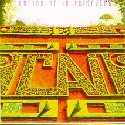 Cai is a top notch Spanish progrock band that made three studio-albums, this is their final effort.
1. El viaje (4:38) : A very pleasant and melodic sound featuring wonderful Spanish vocals (warm and a bit melancholical undertone), tasteful keyboards (including a fluent synthesizer solo), twanging electric guitars and a strong rhythm-section.
2. Tu mirada (3:12) : This one delivers a mid-tempo with a jazzy synthesizer solo, handclapping and fiery electric guitar, supported by sparking piano play.
3. Mercadillo del piojito (4:32) : A track thats sounds like a very dynamic blend of jazzrock and symphonic with splendid interplay, beautiful string-ensemble and Fender Rhodes piano. The powerful and moving guitarwork reminds me of Carlos Santana (his jazzrock-era). GREAT!
4. Donde tu estas (3:52) : First classical piano and warm vocals, then a slow rhythm with the wonderful string-ensemble sound, blended with sparkling piano. The final part contains sensitive, often howling electric guitar and soft synthesizer flights.
5. Fiesta en el barrio (3:38) : "Fiesta" is Spanish for "party", no surprise that the climate in this song is cheerful (a 'latin feel') with a swinging rhythm and excellent interplay between the guitar and keyboards.
6. Caletera (2:44) : It starts with the distinctive Fender Rhodes piano sound, then a mid-tempo featuring sensitive eelctric guitar and again the wonderful string- ensemble sound!
7. Camino a seguir (4:24) : This one has a pleasant mid-tempo with a swinging bass, beautiful electric guitarplay and emotional vocals.
8. Cancion de la primavera (4:40) : The final track delivers a cheerful atmosphere with lush keyboards, expressive vocals and great interplay between the guitar and keyboards, supported by a dynamic rhythm-section.
- Don't expect very complex music or typical progrock with lots of soli and shifting moods. Just enjoy the wonderful melodic and harmonic music from just another wonderful Spanish progrock gem! GUADALQUIVIR - Guadalquivir 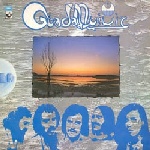 - Once Gualdalquivir was the support act from Spanish legend Triana and they also were the support-band for another Spanish rock legend named Miguel Rios. The music from Guadalquivir is instrumental progressive jazzrock/fusion on a high level, it reminds of Return To Forever: tight, powerful, excellent soli and dynamic and pleasant compositions. I’m delighted about the guitarplayers, one of them sounds like the Andalusian Carlos Santana! If you want to discover Guadalquivir, start with their first eponymous album. IMÁN CALIFATO INDEPENDIENTE — Califato Independiente
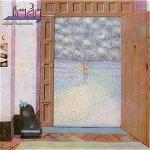
1. Tarantos del Califato Independiente (20:46) : The title points at a strong rhythm in the flamenco music. First a wonderful string- ensemble sound in a sultry atmosphere with twanging guitars and electric guitar play with a strong Morish undertone. Then lots of shifting moods with great guitar-synthesizer interplay (evoking Iceberg) and exciting soli on guitar and synthesizer, a piece with lots of percussion. The final part delivers a slow rhythm with a beautiful and very sensitive electric guitar solo, accompanied by a lush string-ensemble sound, goose bumps!
2. Darshan (8:30) : Again those wonderful strings, followed by great interplay between guitar and synthesizer with the support of a very adventurous rhythm-section. Next a howling guitar solo and an accellaration with fat, pitchbend driven synthesizer flights and a duel between guitar and synthesizer in a captivating atmosphere that blends Prog Andaluz and jazzrock.
3. Cerro Alegre (7:33) : The intro delviers fragile piano work and sensitive twanging classical guitar, then a swinging rhythm with sparkling piano and flamenco rhythm guitar. Halfway a fiery guitar joins, supported by a powerful bass and subdued harpsichord runs. Next a part with bluesy Fender Rhodes electric piano that gradually changes into an exciting interlude with a guitar solo that sounds like the Andalusian Carlos Santana (Caravanserai-era) and culminates in a swinging rhythm, Prog Andaluz meets jazzrock, what a dynamic and cpativating musical experience!
4. Cancion de la Oruga (5:32) : This is a beautiful piece that starts with dreamy twanging classical guitar, soaring keyboards and warm vocals, then a mid-tempo featuring fat synthesizer runs with a Morish undertone and propulsive percussion.
- This is a very exciting fusion of Prog Andaluz and jazzrock, highly recommended!
IMÁN CALIFATO INDEPENDIENTE — Camino del Aguila
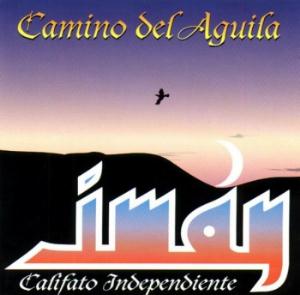
1. La marcha de los enanitos (10:30) : This album opens with a mid-tempo rhythm delivering strong interplay with a Morish undertone between electric guitar and synthesizer and propulsive percussion. Then an exciting build-up from a sultry climate to a gradually more dynamic atmosphere with mindblowing work on a fat sounding synthesizer and fiery guitar with howling runs, supported by a lush string-ensemble sound, very compelling, what a dynamic blend of Prog Andaluz and jazzrock!
2. Maluquinha (6:29) : In a swinging rhythm again we can enjoy the Andalusian Carlos Santana, accompanied by exciting percussion and a fluent synthesizer solo.
3. Camino del aguila (14:00) : The titletrack sounds very alternating with an awesome rhythm-section, great interplay between guitar and synthesizer (like Iceberg) and lots of interesting musical ideas, from a howling, Morish inspired guitar solo and a catchy rhythm with strong interplay between all musicians to guitar work in the vein of Steve Howe on Relayer (Yes) and a flashy synthesizer solo.
4. Niños (3:05) : A wonderful dreamy, quite melancholical piece, first with spacey keyboards, twanging Spanish guitar and warm vocals, then sensitive classical guitar runs, slow synthesizer flights and a lush string-enesemble sound, this is the mellow side of Iman and I love it too!
- Iman delivers a very exciting fusion of Prog Andaluz and jazzrock, highly recommended!
MARTIN, JUAN - Picasso Portraits 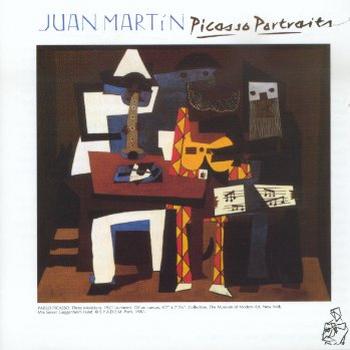 - Juan Martin is a flamenco player who wanted to broaden his musical horizon, just like PACO DE LUCIA did by founding a trio with JOHN MACLAUGHIN and AL DIMEOLA in the early Eighties. Juan moved to England, wrote books about the flamenco guitar technique and played together with rock musicians. This album is one of his many musical projects and in my opinion his best and a great one to discover for the visitors and reviewers of this site. On this album Juan Martin has invited an impressive list of guest musicians: drummer IAN MOSLEY (TRACE/MARILLION), bass player JOHN GUSTAFSON (QUATERMASS/ROXY MUSIC), SIMON PHILLIPS (one of the best session drummers) and keyboardist TONY HYMAS (both on the splendid JEFF BECK albums “Wired” and “There and back”). The result is an exciting meeting between the world of the flamenco guitar and the progressive rock, this is one of my favorite LP’s and recently released as a digitally remastered CD version.
1. Harlequin: First soaring keyboards from Tony Hymas and then exciting interplay between the quick flamenco guitar runs and a dynamic rhythm-section (Phillips/Gustafson), embellished by the typical flamenco handclapping. 2. Desire Caught By The Tail: This is a sensitive duet from the flamenco guitar and the synthesizer (Memorymoog). Halfway there is a sensational break featuring sweeping drums, spectacular synthesizer sounds and rattling castannettes followed by a mid-tempo with splendid runs on the guitar and a fine colouring by the keyboards. 3. Three Musicians: We can enjoy a swinging and catchy rhythm with a funky bass by John G. Perry, powerful drums from Ian Mosley and exciting rasgueado play (quick downward strokes from the nails on the guitar strings). 4. Sleeping Girl: This piece is in the vein of the famous romantic guitar piece “Romance d’amor” delivering a sensitive duet from a twanging acoustic guitar and mellow sparkling piano, WONDERFUL! 5. Self Portrait: The start is like “Spanish caravan” from The Doors: a bit sultry flamenco guitar, culminating in spectacular and propulsive interplay between the flamenco guitar, rhythm-section (Mosley/Perry) and keyboards, it sounds pleasantly bombastic. 6. The Aficionado: An exciting blend of typcial flamenco elements (based a ‘bulerias’, one of the more complex flamenco rhythms) and the technical sound of the progrock: handclapping and quick flamenco runs blended with a funky bass (Gustafson) and pitchbend-driven Moog flights from Hymas, VERY SPECTACULAR! 7. Girls Of Algiers: This one is based on a ‘zambra mora’, the most Arabian-influenced flamenco rhythms. First swelling keyboards, drums and bass, then great interplay between the flamenco guitar, keyboards and rhytm-section, its sounds very dynamic. The tension between the spectacular Moog flights from Hymas and the quick runs on the flamenco guitar delivers a captivating climate, in the end there is a magnificent duel, this is perhaps the finest moment on this album! 8. Weeping Woman: Here is the only solo guitar track from Juan Martin, it introduces you to the wonderful art of the flamenco guitar and sounds very varied with halfway a great build-up, very moving. 9. The Picador: The ‘malaguena’ is perhaps the most famous flamenco rhythm, you will recognize it for sure! It is a cheerful climate with catchy and powerful interplay from the flamenco guitar, rhythm-section and keyboards featuring sensational Moog runs. Halfway the music slows down and then goes faster and faster until an ebullient atmosphere, what a ‘grand finale’! This album is not just another smooth rumba-drenched blend of flamenco and rock but an excellent meeting of the flamenco guitar and the progressive rock, highly recommended!! MEDINA AZAHARA - En Al-Hakim 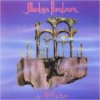 — This my favorite studio-album from MEDINA AZAHARA, in my opinion their most mature, varied and symphonic effort. The opener “Al Hakim ... otro lugar” has that typical Morish climate, strong and expressive Spanish vocals and pleasant synthesizer flights (in the vein of Mark Kelly). The ballad “Otono” has become one of the ‘crowd-pleasers’: a slow rhythm featuring emotional vocals, tender pianoplay, bluesy guitar riffs and some fiery and howling electric guitar. Next is “Velocidad”, a simple but catchy up-tempo rock song delivering some fine synthesizer runs. On “La guitarra” guest musician Vicente Amigo (nowadays one of the leading flamenco guitarists!) enters the scene with a compelling acoustic guitar intro and then quick runs, accompanied by expressive vocals (this is the flamenco spirit) and later a fiery electric guitar and sensational synthesizer flights, what an exciting contrast with the acoustic flamenco guitar play! It’s bluestime in “El destino” but MEDINA AZAHARA adds an extra dimension by blending expressive flamenco guitar, moving mouth-organ, wailing Spanish vocals and harder-edged electric guitar, what an emotional experience, goose bumps! “Dejame vivir” (heavy electric guitar solo) and “Tal como es” (swinging piano solo) are two simple up-tempo rocksongs in the vein of “Velocidad”, tasteful but predictable. The final track “Desde Cordoba” features again the excellent Vicente Amigo on flamenco guitar, this time he delivers exciting duels with Paco Ventura’s hard-edged electric guitar, again goose bumps!
MEDINA AZAHARA - En Vivo (Live)  — This is the most popular Spanish rock band in the post-TRIANA era. In 1990 they released the double-LP “En Vivo”, on this live recording the band succeeded to capture the great live atmosphere and it contains all their best work. MEDIANA AZAHARA delivers on my 1- CD release version “En Vivo” (running time almost 75 minutes) a powerful blend of rock and ‘heavy progressive’. The keyboards from Pablo Rabadan have obvious hints from Mark Kelly (synthesizer flights), Manual Martinez his vocals sound inspired and emotional and the rhythm-section Randy Lopez on bass and Manuel Reyes on drums is strong and tight (sometimes too). But the focus is on Francisco Ventura’s varied and powerful guita rplay, he gives the tasteful arranged compositions a special flavour with his harder-edged but sensitive play, like Ritchie BLACKMORE meets Carlos SANTANA! Discover this top notch Spanish prog rock band: from the catchy “Velocidad”, the beautiful ballad “Otono”, the stage favourites “Amiga”, “Se” and “Hacia Ti” to the highlight “Paseando Por La Mezquita” (compelling Morish undertone and moving crowd participation, goose bumps!) and the up- tempo rock version from “El Lago”, a legendary track from TRIANA’s eponymous debut- album. MEZQUITA - Recuerdos De Mi Tierra — The album ”Recuerdos De Mi Tierra” from ’79 contains six inventive and compelling tracks with exciting interplay between electric guitar and synthesizer, strong and expressive Spanish vocals, the emotional flamenco guitar and some handclapping (palmas). This is certainly one of my favourite Spanish prog rock albums because the atmosphere has such a typical Morish and Andalusian undertone like early TRIANA.
MORON (Diego De) — Diego De Moron
|
|||
 |
|||
rambibambi 
Forum Newbie 
Joined: August 26 2007 Status: Offline Points: 26 |
 Posted: September 16 2007 at 07:53 Posted: September 16 2007 at 07:53 |
||
|
I saw that big thread of unknown prog bands of Erik's- my dear God, good man! Awesome job! I certainly have something to investigate now.
Imust say am very impressed. Edited by rambibambi - September 16 2007 at 07:54 |
|||
 |
|||
erik neuteboom 
Prog Reviewer 
Joined: July 27 2005 Location: Netherlands Status: Offline Points: 7659 |
 Posted: September 16 2007 at 16:08 Posted: September 16 2007 at 16:08 |
||
|
Muchas gracias, Rambibambi
Here is an excellent 2-CD compilation to start your Prog Andaluz quest:
HIJOS DEL AGOBIO Y DEL DOLOR (2-CD)
 - After the great compilations Rock Andalus (CD) and Duende Electrico (2-CD), here is a new and excellent doorway to the captivating and often exciting Spanish progressive rock: a box set entitled Hijos Del Agobio Y Del Dolor (subtitle: Pioneros Y Origines Del Rock Andaluz) featuring a 2-CD and a docu DVD. On CD 1 and 2 you will find many legendary socalled Rock Andaluz bands like Triana, Medina Azahara, Qualdalquivir, Mezquita, Azahar, Alameda, Iman and Cai. These bands, spearheaded by Triana, blended several styles like symphonic rock, hardrock, jazzrock and rock with flamenco, the ethnic music from Andalusia (Southern Spain): the one moment you will be carried away by a virtuosic flamenco guitar intro, palmas (handclapping) or wailing, expressive vocals, the other moment you will be stunned by howling electric guitar, Hammond and Mellotron waves or quick synthesizer flights, a very exciting experience! Also featured are interesting groups that are more mixing flamenco with blues and rock like Miguel Rios (intricate Morish atmosphere) and All & Nothing (flamenco with swinging piano and fiery guitar) or bands with strong flamenco overtones like Camaron De La Isla (pleasant flamenco guitar work but also a flashy synthesizer solo) and Vega (accessible and catchy flamenco-pop). The band The Storm is more in the vein of Rare Bird and Procol Harum delivering a Hammond organ drenched sound. CD-2 is more focussed on special sounding bands like Tabletom (swinging mix of flute, saxophone and piano) and Gualberto (wonderful blend of flamenco, raw electric guitar and vintage keyboards like the string-ensemble), the bluesy Cuarto Menguante and the Sixties band Tarantos (1969) delivering a pleasant mix of pop, rock and flamenco. My highlight is the track Nuevo Dia by Lole Y Manuel featuring moving female vocals, wailing cello, some Mellotron and great flamenco guitar work, an exciting, very compelling song! The DVD is a docu about the development of the Spanish progressive rock between the late Sixties and early Seventies, focussed on the known band Smash. Their guitarplayer Gualberto tells his story along many other legendary or known early Spanish progressive rock musicians. The docu also contains stories about the Underground scene, the drugs, the gypsies and the blend of flamenco and fusion. Unfortunately there is little live footage from bands, only some shots from Gong and Smash but no Cai, Triana or Azahar. Nonetheless, this docu (in Spanish, not subtitled) is a warm and pleasant view on an unique progrock scene. If you want to discover the exciting Spanish progrock scene, this box set is a must!! P.s.: later I will publish my reviews about the other CD compilations Rock Andalus and Duende Electrico.
Edited by erik neuteboom - September 16 2007 at 16:11 |
|||
 |
|||
erik neuteboom 
Prog Reviewer 
Joined: July 27 2005 Location: Netherlands Status: Offline Points: 7659 |
 Posted: September 17 2007 at 16:27 Posted: September 17 2007 at 16:27 |
||
|
Here are the other great Prog Andaluz two compilations:
ROCKANDALUS (Various artists)
 For me it is obvious that the Spanish progrock is the most prolific, distinctive and exciting blend of ethnic music (often the Andalusian flamenco) and progressive rock in the world. It emerged in the second half of the Seventies, speerheaded by the legendary Triana. This review is dedicated to all those progheads who appreciate or want to discover the Spanish progressive rock For me it is obvious that the Spanish progrock is the most prolific, distinctive and exciting blend of ethnic music (often the Andalusian flamenco) and progressive rock in the world. It emerged in the second half of the Seventies, speerheaded by the legendary Triana. This review is dedicated to all those progheads who appreciate or want to discover the Spanish progressive rock
This CD compilation is a perfect introduction, it contains 16 tracks from 5 known bands: Alameda, Medina Azahara, Iman, Cai and Guadalquivir. The lion’s share is by Alameda (6 songs). In general they sound a bit sentimental featuring romantic violins, tender piano, flamenco guitar and almost tearjerking vocals. One of the best compositions on this CD is also by Alameda, it’s titled Amanecer En El Puerto and contains beautiful, omnipresent keyboards and strong, moving vocals. Another good track from Alameda is Al Caer with its sultry, typical Morish atmosphere. A very known band is Medina Azahara, the successor of the legendary Triana but more harder-edged and less flamenco inspired. On their three contributions La Esquina Del Viento, Paseando Por La Mezquita (great guitar riff that blends hardrock and flamenco) and Andalucia they deliver an enthousiastic approach with catchy rhythms, Mark Kelly-like synthesizer flights, powerful, often emotional vocals and pleasant variation. From Iman we got also three songs: the beautiful acoustic Ninos (from their debut-CD released by Musea), Tarantos (wonderful floating guitar sound) and Cancion De La Oruga (very warm and pleasant climate). One of the finest blends of flamenco and progrock is from Cai on the track Noche Abierta: a wide range of keyboards and exciting flamenco guitar work. Their other song Sone Contigo delivers strong, melancholical vocals and senstitive electric guitar. Finally there is Quadalquivir with their powerful and dynamic jazzrock-oriented progrock sound. The interplay is great, the keyboard runs are impressive and the guitarplay is excellent, here is the Andalusian Carlos Santana! THIS IS ESSENTIAL SPANISH PROGROCK, WHAT A MASTERPIECE!! DUENDE ELECTRICO (Various artists) 
On CD1 there is a lot of variety from bands and musicians, the songs are recorded between 1975 and 1994. SMASH delivers a powerful blend of rock, blues, flamenco and Sixties (Stones, Yardbirds) featuring fiery electric guitar and typical Spanish vocals. ICEBERG, IMAN and GUADALQUIVIR make strong and captivating symphonic jazzrock with a Morish undertone and great interplay between guitar and kebyoards, supported by a dynamic rhythm-section. GUALBERTO plays a flamenco guitar piece entitled "Tarantos para Jimi Hendrix", it sounds as an exciting blend of rock and flamenco featuring violins and electric - and acoustic guitar. Another good track is "Al Andalus" from Spanish rock legend Miguel Rios: it contains a typical Morish atmosphere, distinctive vocals from Miguel Rios and a swinging and catchy rhythm. Of course Spanish most pivotal progrock band TRIANA is included, they play "Quiero contarte" featuring wonderful melancholical vocals and compelling progrock. The track "Aires de la Alameda" from ALAMEDA contains strong Spanish vocals and wonderful piano, it's typical 'Rock andalus' just like the final song "Hablo de una tierra" featuring a very moving duet from the violin-Mellotron and flamenco guitar! CD2 contains songs from bands and musicians that are recorded between 1986 and 1996. MEDINA AZAHARA plays heavy progressive with echoes from Marillion, the track "Paseando por la mezquita" is their most Morish/flamenco inspired and sounds powerful and moving. PATA NEGRA (featuring the Amador brothers) plays an exciting blend of rock, blues and flamenco on acoustic guitars. RAIMUNDO AMADOR is also included with the band ARRAJATABLA, they deliver another exciting blend of progrock and flamenco with excellent electric guitar work. A known new band is KETAMA with their strong blend of pop, rock and flamenco featuring typical Spanish vocals. A fine surprise is the music from (again) RAIMUNDO AMADOR in "Ay que gustino pa mis orejas", he plays an unique mix of Bob Marley inspired reggae (with organ and typical rhythm-guitar) and flamenco, very swinging! Another known new band is MANTECA, included with the track "Tarila": a fusion-like mix of flamenco guitar and jazzy piano and saxophone. The final song is from DIEGO THE MORON, he is joined by members from GRANADA, the composition "Despertar (a 'rondena')" delivers a great blend of flamenco guitar and lush keyboards, typical 'Rock andalus'. THIS 2-CD SET IS A PERFECT INTRODUCTION TO THE EXCITING WORLD OF THE SPANISH PROGROCK! In the forthcoming days I will tell you something about the roots of my fascination for Prog Andaluz and the reason why I think it should be a new category on Prog Archives.
Edited by erik neuteboom - September 17 2007 at 16:28 |
|||
 |
|||
Andrea Cortese 
Special Collaborator 

Honorary Collaborator Joined: September 05 2005 Status: Offline Points: 4411 |
 Posted: September 17 2007 at 18:07 Posted: September 17 2007 at 18:07 |
||
|
Hi Erik (thanks for PM),
I'm interested to explore the vast prog andaluz scene and I'm happy with this new thread! I hope to receive my copy of Mezquita's Recuerdos... very soon! Just a question for you: could other prog band blending symphonic within folk coming from outside spain be included in this cathegory? I'm thinking about prog from latin america (Los Jaivas for instance). Or it's only a flamenco inspired prog "movement"? Edited by Andrea Cortese - September 17 2007 at 18:09 |
|||
 |
|||
micky 
Special Collaborator 

Honorary Collaborator Joined: October 02 2005 Location: . Status: Offline Points: 46833 |
 Posted: September 17 2007 at 21:48 Posted: September 17 2007 at 21:48 |
||
you'll love it Andrea... I love that album.. was in the first batch of Prog Andaluz albums I ordered ...and still may be my favorite. |
|||
|
The Pedro and Micky Experience - When one no longer requires psychotropics to trip
|
|||
 |
|||
erik neuteboom 
Prog Reviewer 
Joined: July 27 2005 Location: Netherlands Status: Offline Points: 7659 |
 Posted: September 18 2007 at 04:29 Posted: September 18 2007 at 04:29 |
||
|
Thanks for posting fellow Prog Andaluz aficionados
About the category Prog Andaluz:
It is a totally unique musical movement that blends flamenco and progressive rock (often symphonic rock but also blues, rock and psychedelia). The flamenco as we know it (I don't want deliver a historical story about the development of flamenco) is rooted in Southern Spain, in the region Andalusia, the poor and very dry part of that country. There are obvious Arabian undertones in the music (like in the Zambra) because of the long occupation by The Morish people from Arabia. For the Andalusian people (in general the poor gypsies) music was their way to express the emotions and they did with dancing (baile), singing (cante), handclapping (palmas), the rhythmic stamping and tapping of the heels (zapateados) and playing guitar (toque). They developped a both very skillfull as expressive kind of music (often melancholical overtones) that is only played in Spain (UK/Spanish band Carmen is one of the few exceptions), especially in Andalusia and the city Seville is considered as the cradle of the flamenco. Triana is the band that speerheaded the Prog Andaluz from the mid-Seventies, their name is derived from the most dedicated flamenco area in Seville. Triana inspired bands like Cai, Azahar and Mezquita and many, many bands in Spain (from Gualberto and Smash to Miguel Rios and Goma) and later Medina Azahara who are considered as the successors of Triana (they stopped in 1983 when their keyboardist/singer Jesus De La Rosa died of a car accident). So in my opinion Prog Andaluz is the most unique and most widespread (in Spain) blend of progressive rock and folk/ethnic music and therefore deserves a special category
By the way, just look at the 3 abovementioned Prog Andaluz CD compilations, is there any other blend of folk and prog that manages to deliver this amount of music?
I just added Alameda to my Prog Andaluz special in an earlier post. Edited by erik neuteboom - September 19 2007 at 09:11 |
|||
 |
|||
Dirk 
Forum Senior Member 
Joined: August 11 2005 Location: Netherlands Status: Offline Points: 1043 |
 Posted: September 18 2007 at 06:41 Posted: September 18 2007 at 06:41 |
||
|
I listened to El patio again a few times the last days. It's indeed a very good listen that needs some attention, not a good album to listen to when doing others things.For me En Lago stands out on this album. Overall i agree with Sean Trane's review about this band.
I think i'll try Mezquita next. |
|||
 |
|||
Norbert 
Forum Senior Member 
Joined: October 20 2005 Location: Hungary Status: Offline Points: 2506 |
 Posted: September 18 2007 at 08:27 Posted: September 18 2007 at 08:27 |
||
|
Unfortunately, I really don't know much about this form of prog, but it sounds very exciting.
|
|||
 |
|||
Andrea Cortese 
Special Collaborator 

Honorary Collaborator Joined: September 05 2005 Status: Offline Points: 4411 |
 Posted: September 18 2007 at 09:27 Posted: September 18 2007 at 09:27 |
||
Ok, I understand now. Flamenco is the key of the genre. Other latin-hispanic-portuguese traditional sounds and musics are out (like Los Jaivas as well).
Thanks Erik.
|
|||
 |
|||
debrewguy 
Special Collaborator 
Honorary Collaborator Joined: April 30 2007 Location: Canada Status: Offline Points: 3596 |
 Posted: September 18 2007 at 13:17 Posted: September 18 2007 at 13:17 |
||
|
Don't forget Iman Califato Independiante, Gotic, Los Canarios. Iman, especially, always gets good comments when I play for friends.
|
|||
|
"Here I am talking to some of the smartest people in the world and I didn't even notice,” Lieutenant Columbo, episode The Bye-Bye Sky-High I.Q. Murder Case.
|
|||
 |
|||
erik neuteboom 
Prog Reviewer 
Joined: July 27 2005 Location: Netherlands Status: Offline Points: 7659 |
 Posted: September 18 2007 at 13:44 Posted: September 18 2007 at 13:44 |
||
|
Iman is a good call, Debrewguy but in my opinion Gotic and Los Canarios are Spanish Progressive Rock, not Prog Andaluz.
Dirk, Mezquita is one of the most exciting examples of Prog Andaluz, strong Morish undertones.
Norbert, the problem with Prog Andaluz is that not every proghead likes the a bit wailing Spanish vocals, especially on the early Triana albums. But if you have no problem with it, there is a world to discover!
Indeed Andrea, flamenco is the key-element in Prog Andaluz and I love it since I was 16 years old, I will tell you later about the start of that passion
|
|||
 |
|||
debrewguy 
Special Collaborator 
Honorary Collaborator Joined: April 30 2007 Location: Canada Status: Offline Points: 3596 |
 Posted: September 18 2007 at 14:09 Posted: September 18 2007 at 14:09 |
||
OOPS, sorry. I do like Triana, but I find it a stretch at times to call it prog. Mind you, for me some of the folk prog is a stretch, too. But it's still good stuff. |
|||
|
"Here I am talking to some of the smartest people in the world and I didn't even notice,” Lieutenant Columbo, episode The Bye-Bye Sky-High I.Q. Murder Case.
|
|||
 |
|||
glass house 
Forum Senior Member 

Joined: June 16 2005 Location: Netherlands Status: Offline Points: 4986 |
 Posted: September 18 2007 at 14:18 Posted: September 18 2007 at 14:18 |
||
I've got the El Patio cd, what's not prog about that?
|
|||
 |
|||
debrewguy 
Special Collaborator 
Honorary Collaborator Joined: April 30 2007 Location: Canada Status: Offline Points: 3596 |
 Posted: September 18 2007 at 17:45 Posted: September 18 2007 at 17:45 |
||
While I'm getting into their music, I find that the flamenco influenced parts tend to be the ones that stick in my mind right away. I have to admit to a preference for electric guitars & keyboards. But I haven't thrown Triana out. There's still something in their music that makes me want to come back for more, though lately Hijos Del Agobio is the one I'll put on more often (which is not much as I've picked a couple of newer CDs in the past month). |
|||
|
"Here I am talking to some of the smartest people in the world and I didn't even notice,” Lieutenant Columbo, episode The Bye-Bye Sky-High I.Q. Murder Case.
|
|||
 |
|||
erik neuteboom 
Prog Reviewer 
Joined: July 27 2005 Location: Netherlands Status: Offline Points: 7659 |
 Posted: September 18 2007 at 18:33 Posted: September 18 2007 at 18:33 |
||
|
Until now I am very glad with the views and replies, thanks  P.s.: I have updated the Prog Andaluz Special with more reviews and cover pictures, see my main source: http://www.dlsi.ua.es/~inesta/Prog/SPE/index.html
Audio to discover Cai: http://www.caimasalla.com/audio.htm
Edited by erik neuteboom - September 19 2007 at 04:50 |
|||
 |
|||
Post Reply 
|
Page 123 10> |
| Forum Jump | Forum Permissions  You cannot post new topics in this forum You cannot reply to topics in this forum You cannot delete your posts in this forum You cannot edit your posts in this forum You cannot create polls in this forum You cannot vote in polls in this forum |